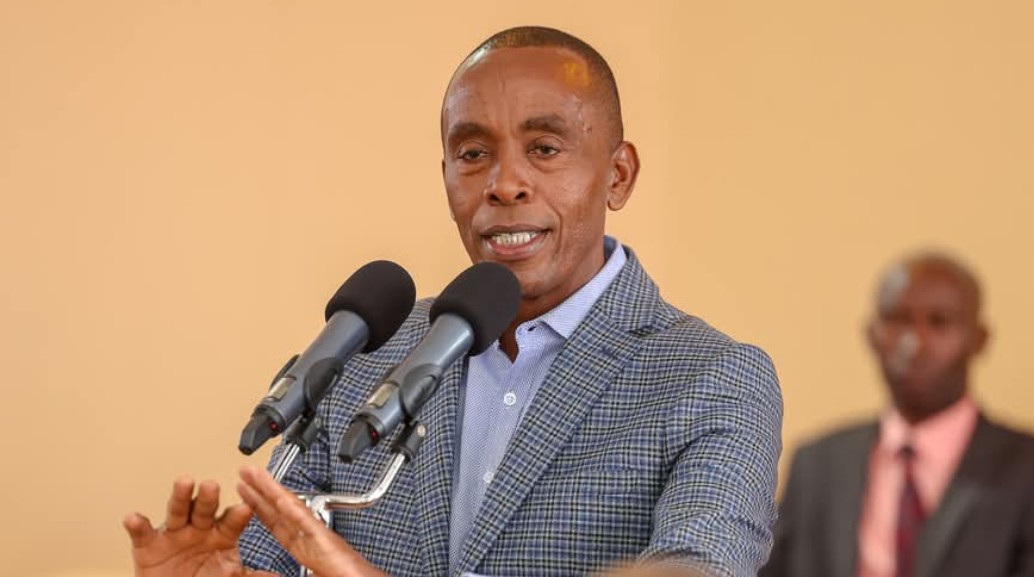Treasury ordered to draft rules for on-lent loans amid oversight concerns

Speaking before the Public Debt and Privatisation Committee, Treasury Cabinet Secretary John Mbadi admitted that there are currently no formal rules governing on-lending activities, leaving several key oversight questions unresolved.
The Treasury has been directed to urgently establish clear regulations to guide the management of on-lent loans, amid concerns that the absence of such a framework has exposed the government to repayment risks and legal loopholes.
On-lent loans are funds that the National Government borrows from external sources like international banks, development partners or multilateral institutions and then lends these funds to other entities, usually State-Owned Enterprises (SOEs) or County Governments.
More To Read
- Mbadi confirms Treasury deliberately influencing shilling’s value against dollar
- Government clears Sh93 billion in road bills after borrowing Sh104 billion from banks
- Finance Committee slams CS Mbadi for dodging key oversight sessions
- Treasury approves phased settlement of lecturers’ Sh7.76 billion arrears
- State agencies directed to pay Sh2.2 billion owed to Posta to avert shutdown
- Funding shortage puts EACC’s anti-graft war at risk- Auditor General
Speaking before the Public Debt and Privatisation Committee, Treasury Cabinet Secretary John Mbadi admitted that there are currently no formal rules governing on-lending activities, leaving several key oversight questions unresolved.
The Committee warned that continued delays in putting these rules in place could shift the repayment burden to the National Government.
Mbadi acknowledged the regulatory gap but assured MPs that the Ministry of Treasury will establish standalone rules to govern on-lent loans.
“Lack of regulations does not mean we are operating outside the law. What we just need to do is be neater and more procedural,” Mbadi said.
However, Wajir East MP Adan Daud challenged the explanation, arguing that the Treasury has been operating outside the law since the Public Finance Management (PFM) Act was enacted in 2012.
“Section 57 of the PFM Act grants the National Government power to lend money, so my question is, do you have any regulations in place to govern such loans? If not, then what regulations are you using to ensure recovery?” Daud posed.
An audit by the Office of the Auditor-General (OAG) on the management of on-lending activities raised concerns over credit risk assessments before on-lent loans are issued.
Mbadi explained that the Treasury has set up a Fiscal Risk Committee (FRC) and that, going forward, all projects must meet strict financial evaluation criteria before borrowing approval is granted.
The report also revealed that as of June 30, 2024, the principal amount of on-lent loans due stood at Sh153.79 billion, of which only Sh1.602 billion, representing 1.04 per cent, had been repaid.
The OAG warned that continued defaults by State-Owned Enterprises (SOEs) risk transferring the repayment burden to the National Government.
Committee Chairperson and Balambala MP Abdi Shurie questioned whether there is a recovery framework to ensure that County Governments, the major beneficiaries of on-lent loans, repay.
“Most of these on-lent loans go to County Governments. The National Government procures, then it goes to County Governments, and from there, as the National Assembly, we have no mandate to follow up on the usage, whether it went to the intended purpose or not,” he said.
In response, Mbadi explained that implementing the Treasury Single Account (TSA) will help ensure that on-lent funds are used for their intended purposes, something that has not always been the case.
He further noted that County Governments now have no justification for failing to repay the loans since revenue allocations are made on time.
The CS assured the Committee that the Ministry is taking steps to ensure the issues raised in the OAG audit are addressed and that such lapses do not recur in future audits.
Top Stories Today














































